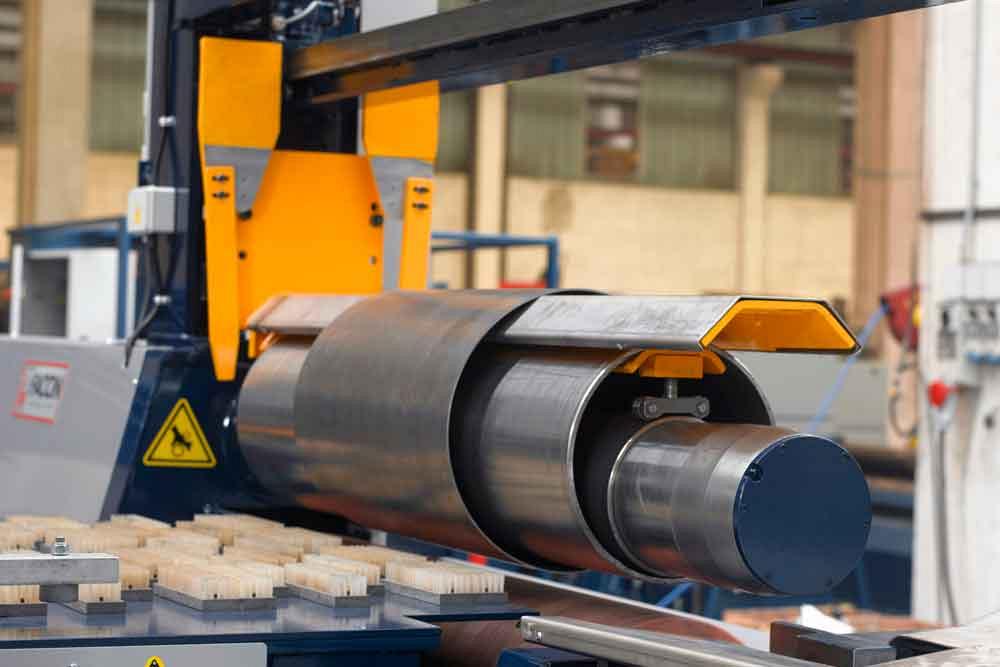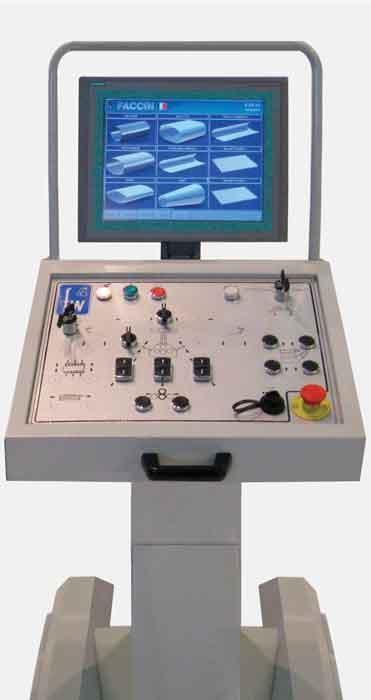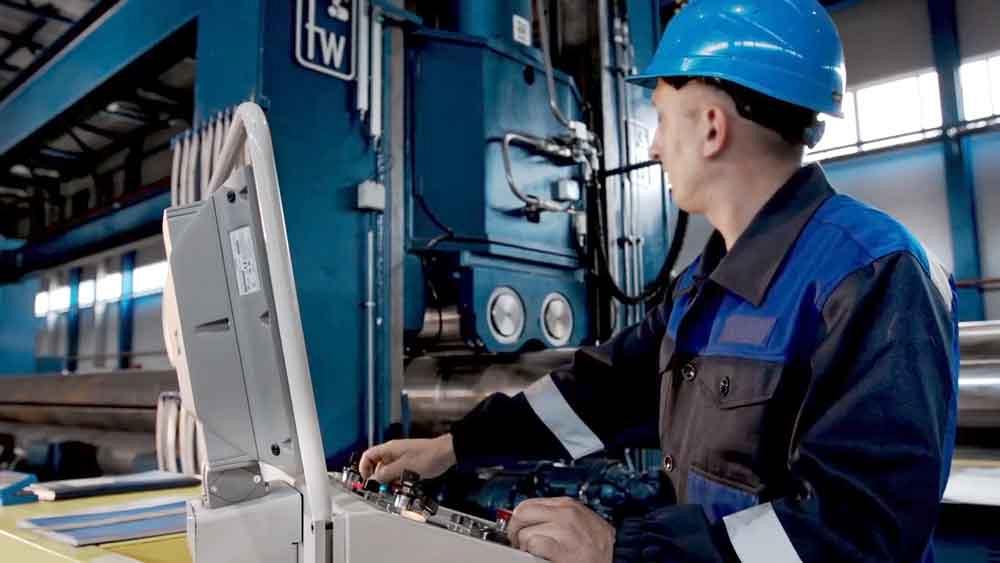Executive Vice President, Technical Sales and Business Development
- FMA
- The Fabricator
- FABTECH
- Canadian Metalworking
Categories
- Additive Manufacturing
- Aluminum Welding
- Arc Welding
- Assembly and Joining
- Automation and Robotics
- Bending and Forming
- Consumables
- Cutting and Weld Prep
- Electric Vehicles
- En Español
- Finishing
- Hydroforming
- Laser Cutting
- Laser Welding
- Machining
- Manufacturing Software
- Materials Handling
- Metals/Materials
- Oxyfuel Cutting
- Plasma Cutting
- Power Tools
- Punching and Other Holemaking
- Roll Forming
- Safety
- Sawing
- Shearing
- Shop Management
- Testing and Measuring
- Tube and Pipe Fabrication
- Tube and Pipe Production
- Waterjet Cutting
Industry Directory
Webcasts
Podcasts
FAB 40
Advertise
Subscribe
Account Login
Search
Why should we consider a CNC plate roll?
Workforce, consistency, productivity needs point to upgrading to a CNC plate bending roll
- By Steve Addy
- February 25, 2020
- Article
- Tube and Pipe Fabrication
Say that you have an older plate rolling machine. The machine components may be worn and the hydraulics are inefficient, possibly causing loss of pressure. But because your lead fabricator responsible for rolling has an intimate knowledge of the machine’s weaknesses, he can work his magic with the old machine and achieve acceptable results—if time restraints are not critical.
The question is, what happens to your capabilities if this guy decides to leave for whatever reason? Finding a replacement with the required skill set would be very difficult, and training an existing employee could take months.
You may not have considered bringing plate rolling in-house because of the skill level needed to produce parts consistently, accurately, and quickly. As a result, you continue to outsource all your plate rolling work at a cost.
There are many reasons to consider investing in a CNC plate bending roll other than a skills shortage:
Consistent leading and trailing edges
Consistent accuracy
Consistent shape production
Simple development of irregular shapes
Reliability for both low and high volumes
Automation in varying degrees
Simple Programming, Consistency
CNC facilitates simple programming and consistency with varying degrees of automation.
On fully automated lines, the plate is loaded automatically onto the feeding table. Motorized alignment ensures that the plate is parallel to roll input, the material is prebent, rolled, and supported. Then it is auto ejected and transferred to the welding station.
On an automated line, plate rolling is not necessarily the only operation. It is part of upstream and downstream processes, such as welding.
The CNC has to be powerful enough to control all the different axes, not only those of the roll bender, but also of all the other accessories such as the feeding table, plate centering, lateral and top supports, and clamping devices. The entire process has to be flexible enough to synchronize with the other operations on the line.
Automated lines can incorporate some manual operations. For example, they can have manual feed, automated rolling, and manual part removal.
It’s important to recognize that CNC is not going to completely replace the operator!
All the parameters can be entered into the CNC, but in reality, material thickness and yield strength can vary, and every difference from the programmed parameters can result in a variation, from design to workpiece.
An operator has to be involved to adjust the parameters as needed. However, this operator does not have to be a rolling expert. Once he has adjusted the program, the plate roll operation can be run in automated mode.
Roll Bending for the Next-Gen Workforce

A hot water tank is rolled as a simple cylinder and usually is produced in an automated line at high volumes.
It’s happening in the U.S. It’s happening in Europe. It’s happening all over the world. It’s very difficult to find young talent willing to work with old technology. Young workers have different expectations, and this involves machines with user-friendly interfaces that are intuitive. CNC plate rolling machines promote simpler operation and faster learning to meet today’s workforce challenges.
Manufacturing companies face huge challenges; intensified pressure; and the need to reduce production time, improve flexibility, and increase quality while reducing energy consumption.
Trading up to CNC technology can help fabricators meet those challenges. Features such as systems diagnosis, teleservice, management control, drawing imports, and rolling and production lot statistics are helping the manufacturers of today face the challenges of tomorrow.
Steve Addy is executive vice president, technical sales and business development for Faccin S.p.A., Via dell’Industria 19, 25010 Visano, Brescia, Italy, 412-965-0067, steve.addy@faccin.com.
About the Author
subscribe now

The Fabricator is North America's leading magazine for the metal forming and fabricating industry. The magazine delivers the news, technical articles, and case histories that enable fabricators to do their jobs more efficiently. The Fabricator has served the industry since 1970.
start your free subscription- Stay connected from anywhere

Easily access valuable industry resources now with full access to the digital edition of The Fabricator.

Easily access valuable industry resources now with full access to the digital edition of The Welder.

Easily access valuable industry resources now with full access to the digital edition of The Tube and Pipe Journal.
- Podcasting
- Podcast:
- The Fabricator Podcast
- Published:
- 04/16/2024
- Running Time:
- 63:29
In this episode of The Fabricator Podcast, Caleb Chamberlain, co-founder and CEO of OSH Cut, discusses his company’s...
- Trending Articles
AI, machine learning, and the future of metal fabrication

Employee ownership: The best way to ensure engagement

Dynamic Metal blossoms with each passing year

Steel industry reacts to Nucor’s new weekly published HRC price

Metal fabrication management: A guide for new supervisors

- Industry Events
16th Annual Safety Conference
- April 30 - May 1, 2024
- Elgin,
Pipe and Tube Conference
- May 21 - 22, 2024
- Omaha, NE
World-Class Roll Forming Workshop
- June 5 - 6, 2024
- Louisville, KY
Advanced Laser Application Workshop
- June 25 - 27, 2024
- Novi, MI





























